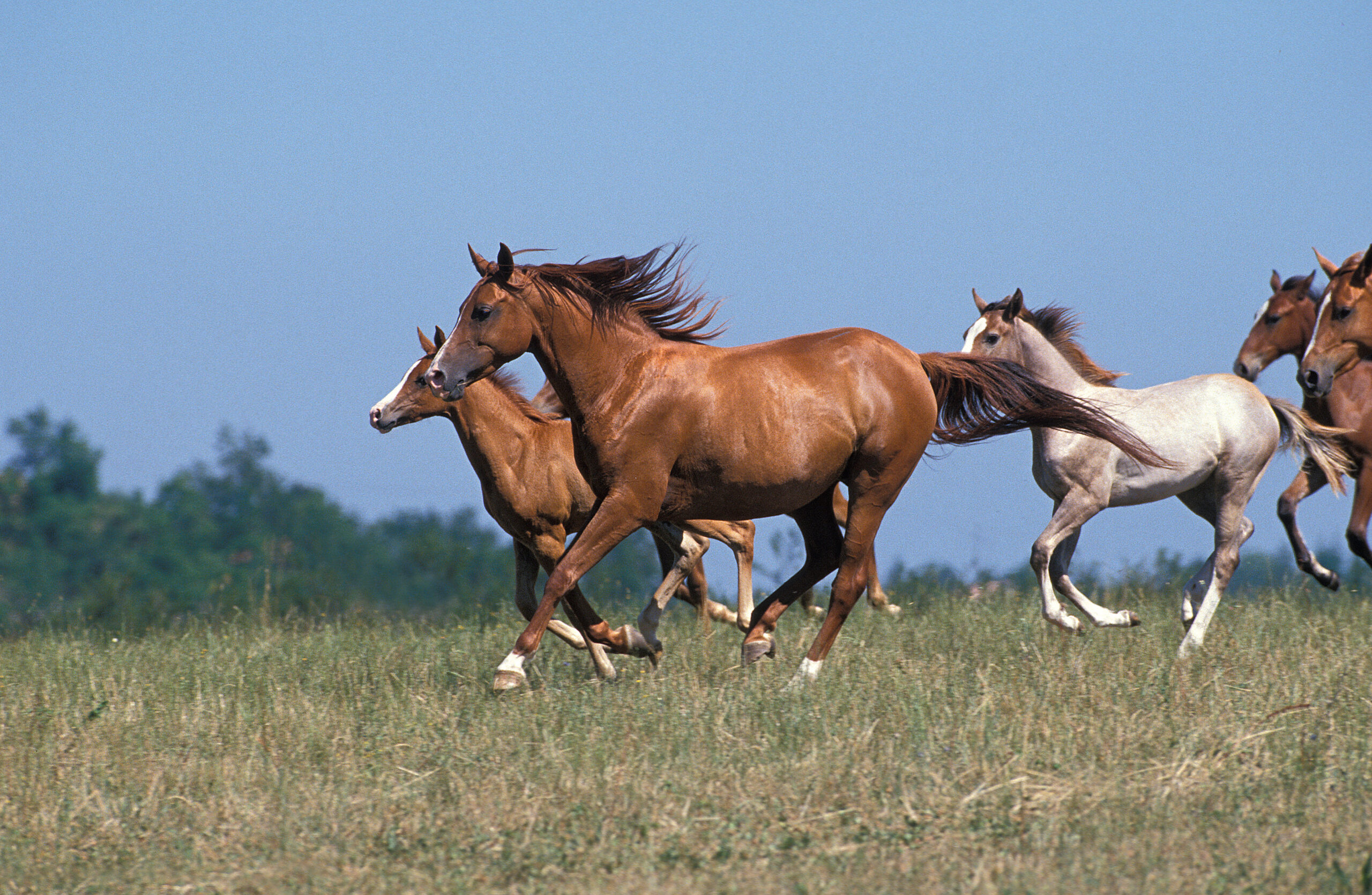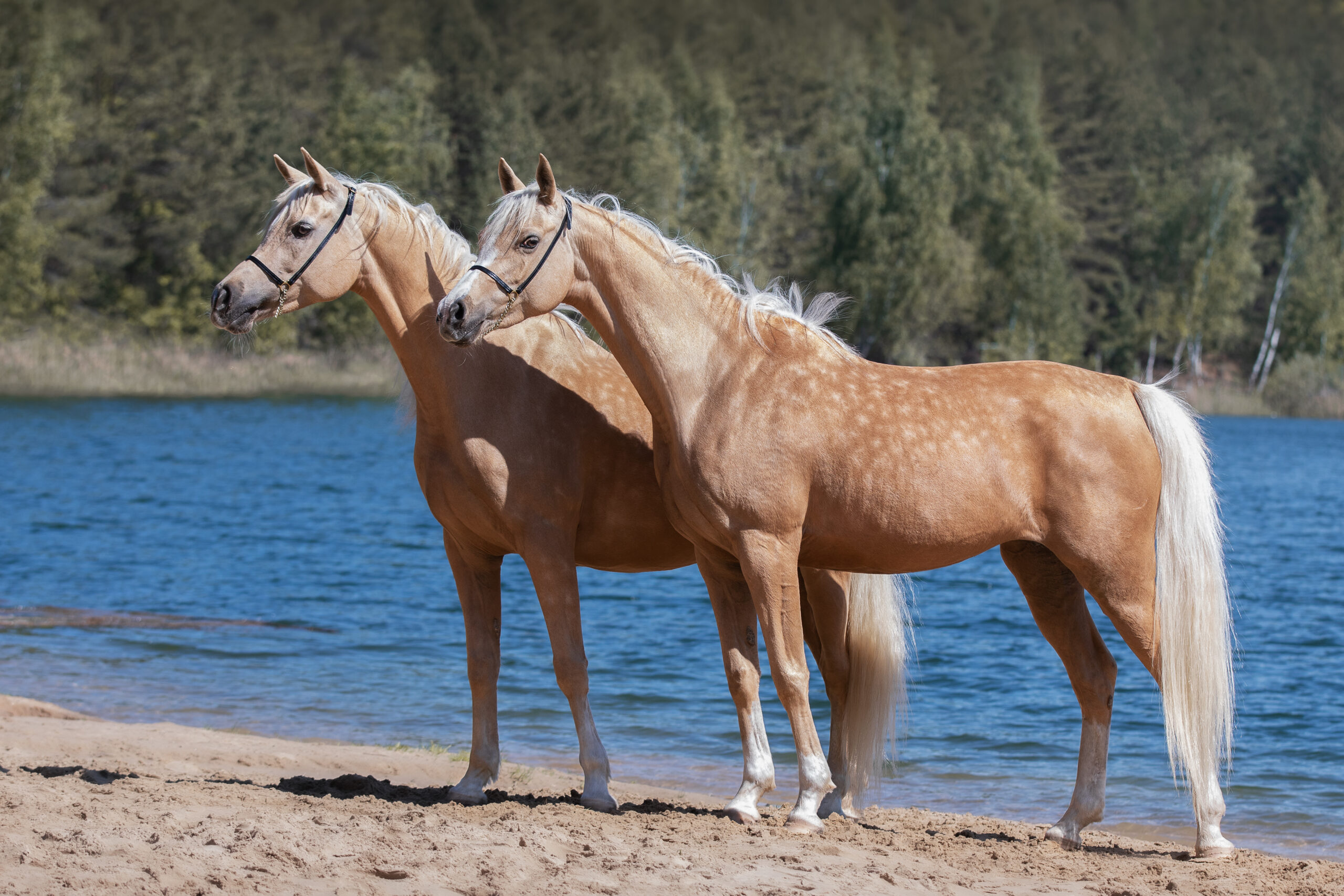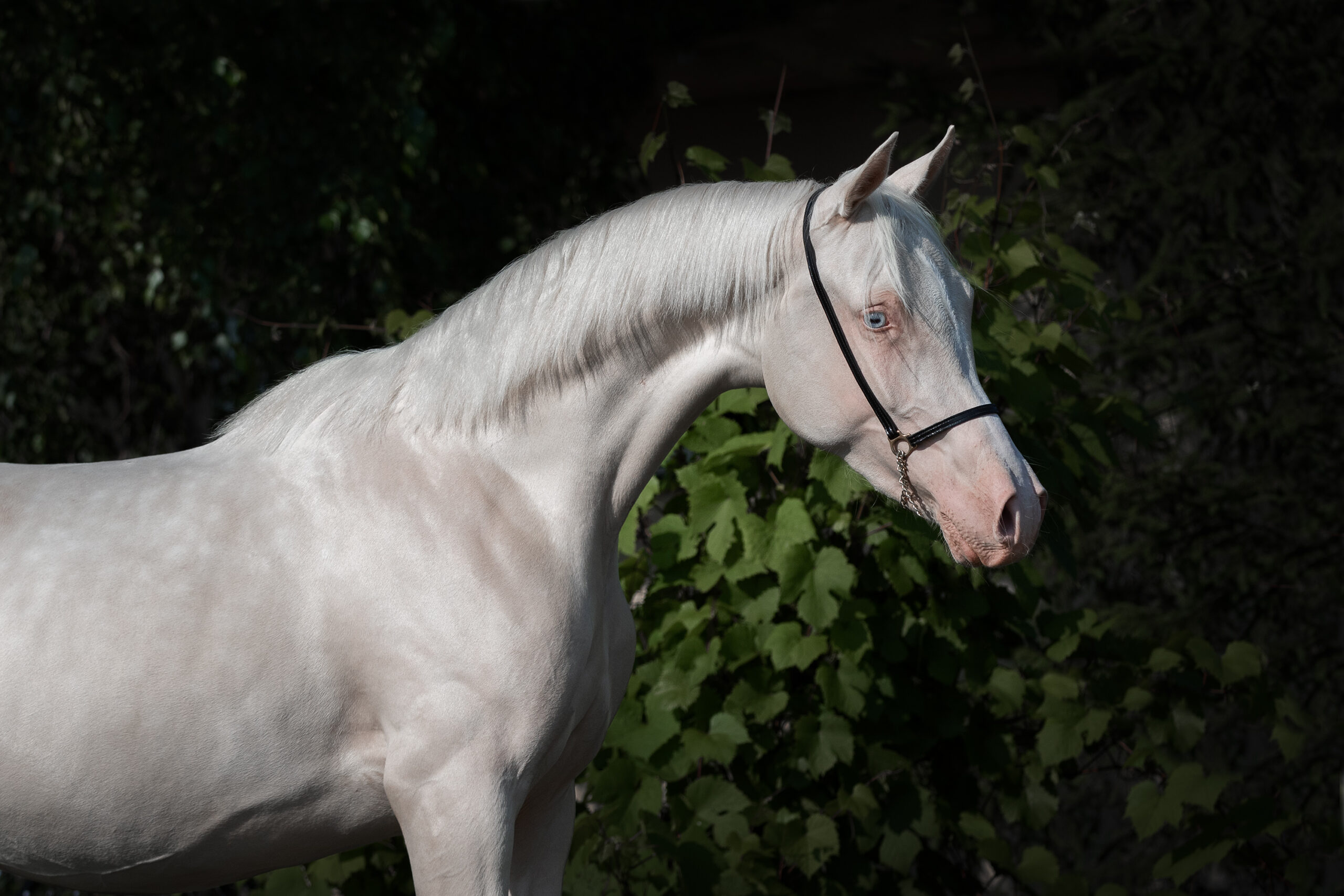The Arabian Horse is one of the most admired horse breeds in the world. The beauty and grace of these lovely animals have captured the hearts of horse enthusiasts everywhere. Part of their undoubted attraction is the collection of wonderful tales that have gathered around these captivating horses. The true story of their origins is equally interesting, and often, even more exciting.
History and a Mystery: the Origins of the Arabian Horses
One of the key questions about the Arabian Horse is whether it is an Arab Horse, that is to say, belonging to the Arab people, or an Arabian Horse from the deserts of the Arabian Peninsula. Many people believe that it is an extremely ancient breed that originated in the Arabian Peninsula. It is said, for example, that the horses of the kings of ancient Egypt look very similar to the modern Arabian Horse. Images of kings such as Tutankhamun and Ramesses II show them in their chariots driving lovely horses with tails carried high like modern Arabians.
However, not all the horses depicted in Egyptian imagery look like this. Scholars now argue that the similarity of the ancient horses to the modern ones is not proof of continuity. Since the earliest Egyptians had no horses at all, and horses only appear in imagery in any numbers from the early Eighteenth Dynasty onwards, horses were not indigenous to Egypt. They were traded and possibly captured during wars with other people. This included the war with the Hyksos who ruled in the Egyptian Delta for a period of some 400 years, and who did have horses. Images in Egypt also show traders bringing horses to this ancient land. These traders were most likely bringing them from fertile areas in parts of Syria, and even further off to the north and east.
At this time, and right into the Roman period, there is no evidence for horses in the Arabian Peninsula, which was mostly unpopulated. Indeed, the Roman name for it: Arabia Deserta, provides the clue. The Roman writer Strabo pointed out that there were no horses known in this region. The Romans classified many breeds by their place of origin, such as the Parthian, Gallic, Libyan, and Greek. There are no references to an Arabian Horse. Where, then, did the Arabian, or Arab Horse come from?
What makes Arabian Horses so special?
Arabians are not just admired for their beauty and grace or their amazing history. They are hard-working, intelligent animals that make ideal equine partners in a range of activities and sports.
The Horse of the Bedouin
Some writers suggest that the Arabian is in fact the descendant of the Libyan Horse mentioned by the Romans. This has not yet been proven. The first references of horses that are closely associated with Arab people are in the ninth century CE. From this time on, the history of the Arab, or Arabian Horse becomes clearer, although there are still few references to a horse by this name. The Bedouin people were breeders of good horses.
These nomadic people of ancient origin traveled long distances throughout the Middle East and Persia. Their horses lived closely with them and bonded very strongly with their human families. There were similar groups of nomadic people in North Africa. They traveled with their flocks and herds to find grazing according to the season. Those who had horses valued them greatly and used them for riding, raiding, and warfare rather than as beasts of burden. Those roles were taken by donkeys and camels. Sometimes, they moved into the northern part of the Arabian Peninsula if seasonal grazing was available.
The camel was the main choice for travelers in this region, as it was suited to desert conditions and could carry both people and loads. During the Crusades, Europeans both fought and settled in the coastal areas of Palestine, and it is often said they brought back Arab horses with them to their own countries. However, there is little documentary evidence for this. There is evidence for horses known as Barbs being imported from North Africa during the medieval period and in the fifteenth century.

The Arabian horses are intelligent, athletic animals and very popular as riding and family horses. This is because they combine great physical qualities with a gentle and willing nature.
The Later History of the Arabian Horses
In the fourteenth century, records in Cairo show that breeding Arab Horses was important to the rulers of Egypt. In the sixteenth century, the first verifiable records can be found in European literature. Writers, such as the traveler Leo Africanus and the Englishman Gervase Markham, include references to Arabian or Arab Horses. King James VI of Scotland, who was also James I of the united crowns of England and Scotland, bought an Arabian Horse priced at £150 from a seller called John Markham. This was a great price for any horse in his day. During the seventeenth and eighteenth centuries, the breeds of horses known as “Oriental” horses: the Arabian, the Barb, and the Turkoman, became even more popular in England. They were also popular with other European rulers.
Wealthy people began to acquire them to breed with their other horses, and from this development came the Thoroughbred Horse. Three Oriental stallions came to be seen as the founding fathers of the breed: The Byerley Turk, the Godolphin Arabian, and the Darley Arabian. However, these three may not all have been Arabian Horses, and many other horses contributed to the Thoroughbred. Napoleon prized Arab horses and is believed to have had several, including the famous Marengo, who may actually represent more than one of Napoleon’s horses. The Arabian was very popular as a light riding horse because it moved so beautifully. It became especially cherished as a riding horse for ladies. By the late nineteenth century, travelers were beginning to explore the mysterious Arabian Peninsula looking for the origins of these wonderful horses. The English travelers Wilfrid and Anne Blunt traveled to Syria, Iraq, and Arabia. They rode with the people of these regions and even experienced a Ghazu, a mounted Bedouin raid.
After suffering various difficulties, they succeeded in their aim. They brought back the horses that would be the foundation stock of probably the world’s most famous Arabian Horse Stud: The Crabbet Park Stud in Sussex, England. From this base, horses were eventually sent all over the world. Their daughter Judith Blunt-Lytton, Lady Wentworth, was probably the most famous Arabian Horse breeder in the world in the twentieth century. There were also many American enthusiasts of the breed, including Spencer Borden, Homer Davenport, and W.K. Kellogg. The Arabian was crossed with many other types of horses to produce new breeds. In France, the cross of Thoroughbred with Arabian produced a very popular breed called the Anglo-Arabian, or Anglo-Arab.
As each nation acquired Arabians, they became known by the name of the country. They were referenced as Polish Arabians, Russian Arabians, and so on. Today the Arabian is one of the world’s iconic and most recognizable breeds, famed for its endurance and athletic qualities. The World Arabian Horse Organization (WAHO) estimates that the global population of Arabians is now over a million. They are distributed throughout 62 countries. The type of Arabian that is considered by many people to be most pure is the Straight Egyptian or Desert Bred Arabian.
Video of Arabian horses
The Straight Egyptian
Modern Straight Egyptian Arabians, also known as Desert Bred, are descendants of the horses of the Turkish ruler of Egypt, Mohamed Ali the Great (1769-1849). This powerful leader acquired horses from various sources, particularly those tribes he overcame in conflict. Many horses from ancient lines were gained by treaty and kept in his new stables.
His grandson Abbas Pasha maintained the purity and record-keeping of the stock until his death. Then a relative, Ali Pasha, inherited them, and eventually, the stud was dispersed. Many were bought by Anne Blunt for both Crabbet Park and the Blunt’s stud in Cairo, Sheykh Obeyd. The descendants of the Mohamed Ali horses are believed by many to be the purest representatives of the Arabian today.
The Arabian Horse in Myth and Legend
There are few breeds with as many lovely stories as the Arabian. Two of the best known relate to its origin and history. The first tells that Allah, taking a handful of south wind, blew on it to create the horse. He created the horse like no other animal, for it would “fly without wings, and conquer without the sword.” Arabians have certainly conquered many hearts!
The second story relates to the faithful mares of the Prophet, of which there were five. The tale relates how the Prophet Mohammed’s horses were all thirsty and went to drink. When he blew the battle trumpet to call them back, only five loyal mares responded, and they became the famous “Mares of the Prophet.” These are sometimes said to be the founding mares of the various strains.

They average around 14 hands (56 inches/142 cm) to 15 hands high (60 inches/152 cm). They are generally categorized as light riding horses, weighing 800 to 1,000 pounds.
Arabian Horse – Conformation
The conformation of the Arabian is very distinctive. Their heads are considered particularly attractive. Arabians have proud, arching necks and beautiful faces. The feature that distinguishes them most from other breeds is the dished (concave) nose. Originally, this was not as strongly marked as it is in members of the breed today. The neck is relatively long, allowing for the lovely arched shape that is also characteristic of the breed. The back should be short and strong. Arabians sometimes have one fewer vertebrae than other horses. Their chests are relatively broad and powerful, allowing for excellent hearts and lungs.
Their legs are muscular and strong, yet also elegant and refined. They have healthy, hard hooves. Their eyes are bright and luminous and their coats, manes, and tails soft and silky. The full tail of the Arabian Horse is often carried high, giving them an air of lively alertness and enthusiasm. Several different angles of tail carriage have been identified in purebred Arabians. Coat colors are mainly gray, black, chestnut, and bay. They can also have white markings, including socks, stockings, blazes, and stars. Purebred Arabians are not tall. They average around 14 hands (56 inches/142 cm) to 15 hands high (60 inches/152 cm). They are generally categorized as light riding horses, weighing 800 to 1,000 pounds.
What is the Arabian Horse used for?
Arabians are used in all types of equestrian sports and activities and are particularly successful in events that make the best use of their hardiness and stamina.
Characteristics of the Arabian Horse
Today, these highly intelligent, athletic animals are very popular as riding and family horses. This is because they combine great physical qualities with a gentle and willing nature. Their temperament makes them very suitable for all types of riders, from beginners to advanced competitors. Stamina is one of the major characteristics of the Arabian, a quality that makes it very successful in endurance sports.
Despite their apparent delicacy, they are, in fact, tough horses. Their hardiness reflects the harsh conditions in which they were bred for centuries by the Bedouin. While the Bedouin cared for them deeply, they were constantly on the move. Sometimes grazing would be limited. The constant movement and occasionally sparse grazing maintained the horses’ characteristics over centuries.

The heads of the Araian horse considered particularly attractive.The neck is relatively long, allowing for the lovely arched shape.
Arabian Horses – Breeding and Uses
One of the interesting aspects of the Arabian is that since at least the fourteenth century, records have been kept of some of the pure lines. Arabians are sometimes categorized by “strains” which are believed to be linked to maternal lines, and there is some discussion about how many strains there are. Organizations such as the Arabian Horse Association recognize five: Keheilan, Seglawi, Abeyan, Hamdani, and Hadban. These are sometimes associated with the Five Mares of the Prophet Mohammed.
However, it is also suggested that there are up to nine strains, whereas others suggest just three. Modern DNA studies have failed to identify matrilineal strains that may link with the traditional names. However, purity of lineage is important for modern Arabian breeders, whose studbooks are strictly maintained and regulated. Arabians compete in every aspect of equestrian sport today. Traditional purebred Arabians are unlikely to be able to compete with Warmbloods at the top level of sports such as show jumping, dressage, or eventing. However, they can compete very successfully in these sports at the club level. They have also appeared in the hunting field.
Arabians compete successfully as trail and reining horses in Western riding. Arabians have also made very successful driving horses. There are many shows and show classes dedicated to Arabians. Endurance is one equestrian activity in which the Arabian excels as a sport horse. The leading horses in endurance races and long-distance riding events are mainly Arabians and have been so for decades. As early as the 1930s, these horses were identified as the leaders in the emerging sport.
Are Arabian Horses fast?
Arabians are certainly fast and have wonderful gaits, but they are not the fastest horses in the world. This accolade goes to the Thoroughbred. The TB was produced from a genetic mix of diverse types and breeds, which also included the Arabian Horse.
Diet and Nutrition
WAHO veterinarians point out that the Arabian developed specialist heat-dissipating qualities, due to their places of origin. Basically, their body weight ratio to surface area means they are very efficient at losing heat. The horses also developed slow-twitch muscle fibers which most likely enhanced their endurance qualities.
While it’s not possible to replicate the original environment in domestic conditions, it is possible to bear this in mind. A good nutrition and training schedule does not overstress the horse, maintains the correct levels of electrolytes, and lets horses feed naturally by nibbling little and often. This goes a long way to reducing the issues of laminitis and colic, which are both closely related and also result from inappropriate feeding and management regimes.
Health and Behavior of Arabian Horses
Most Arabians are extremely healthy animals, with plenty of stamina, good lungs and heart, and excellent feet. They can be long-lived and work until a ripe old age. They do suffer from some relatively rare conditions such as Severe Combined Immunodeficiency Disorder (SCID) and Lavender Foal Syndrome (LFS), both of which affect youngstock.
They can also suffer from Cerebellar Abiotrophy (CA) and Occipital Atlanto-Axial Malformation (OAAM). If horses are suffering from one of the latter two conditions, their behavior can be unpredictable. As horses whose ancestors were raised to be hardy in tough conditions, Arabians kept on rich grass can be prone to EMS (Equine Metabolic Syndrome). Fortunately, most Arabians are healthy, well-balanced, and bond closely with their owners. Indeed, Arabians need this close contact with their humans to bring out the best in them.

